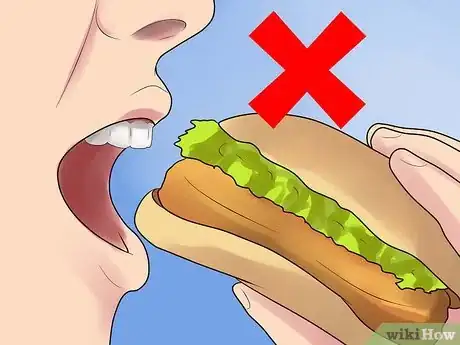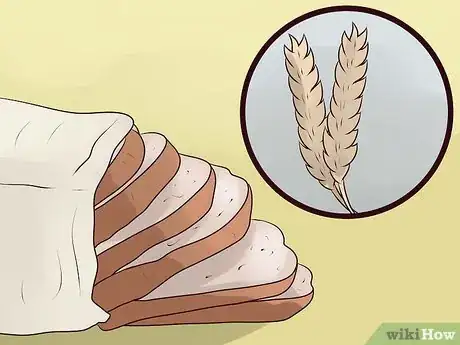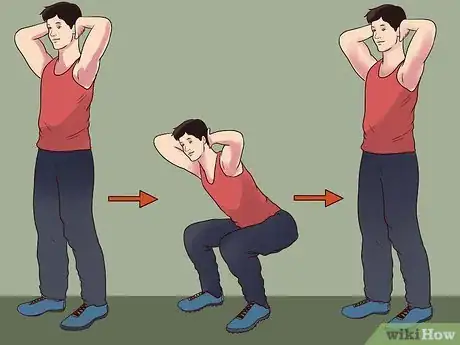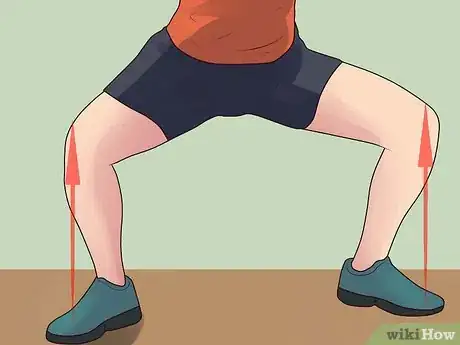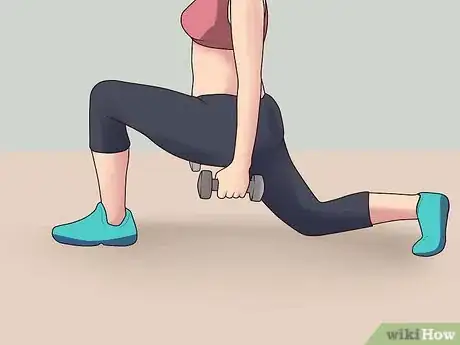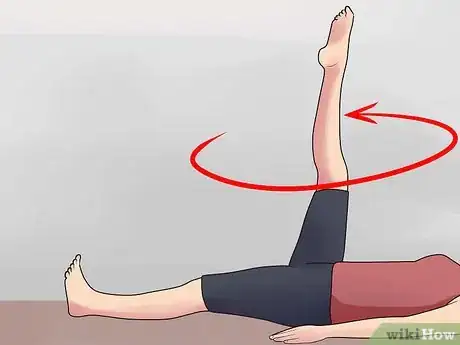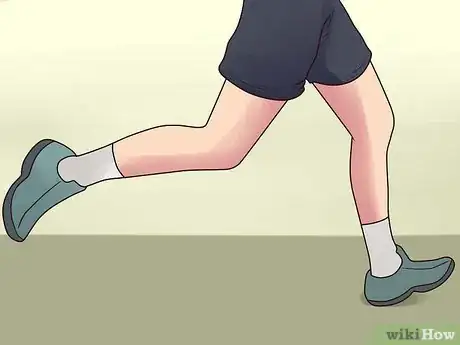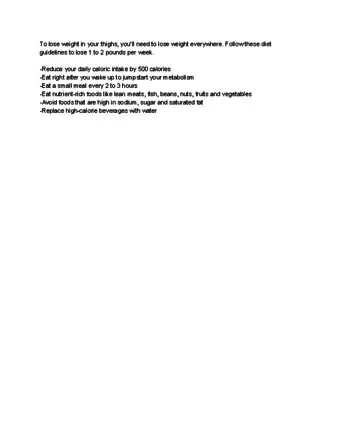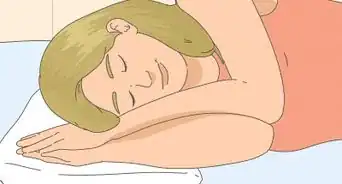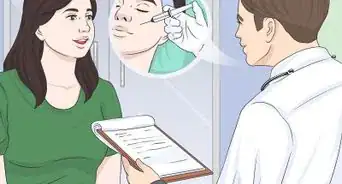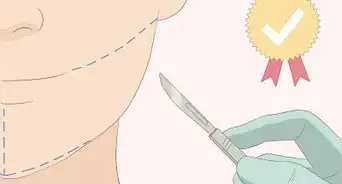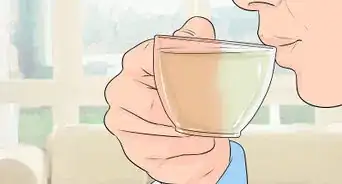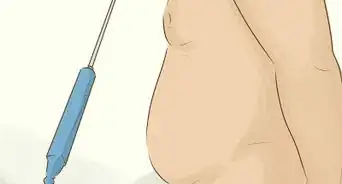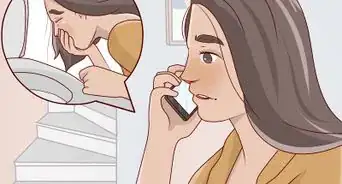This article was co-authored by Julian Arana, M.S.eD., NCSF-CPT. Julian Arana is a Personal Trainer and the Founder of B-Fit Training Studios, a personal training and wellness set of studios based in Miami, Florida. Julian has over 12 years of personal training and coaching experience. He is a certified personal trainer (CPT) by the National Council on Strength and Fitness (NCSF). He has a BS in Exercise Physiology from Florida International University and an MS in Exercise Physiology specializing in strength and conditioning from the University of Miami.
There are 9 references cited in this article, which can be found at the bottom of the page.
wikiHow marks an article as reader-approved once it receives enough positive feedback. In this case, several readers have written to tell us that this article was helpful to them, earning it our reader-approved status.
This article has been viewed 709,869 times.
It's difficult to lose weight in one specific area of your body. When you lose weight, you lose it all over your body, not just your chest, your stomach, or your inner thighs, let alone your upper thighs. The best method is to incorporate a balanced combination of exercise and diet and here's how.[1]
Steps
Changing Your Diet
-
1Keep your diet in check. Since there’s no easy way to spot reduce, burning total body fat will help you reduce the fat on your upper thighs.[2] If you’re overweight, start by reducing your daily calorie intake by 250 to 500 calories per day.
- Cutting 500 calories a day will result in losing one pound a week (3,500 calories is one pound). But remember: That's not including the calories you'll be burning with your increased workout regimen.
-
2Limit your intake of fat. The Academy of Nutrition and Dietetics (AND) recommends that adults limit their total dietary fat to 20 to 35 percent of their daily calorie intake. Since one gram of fat equals nine calories, a 2,000 calorie diet should consist of 44 to 78 grams (1.6 to 2.8 oz) of fat per day.
- The DASH eating plan (for lowering cholesterol) recommends a daily dietary fat intake of 27 percent of total calories (60 grams of fat per day for a 2,000 calorie diet). Try to include healthy (unsaturated) fats when possible while limiting saturated fats. Foods that are high in unsaturated fat include vegetable oils, such as olive and canola oils, nuts, seeds, and avocados.
Advertisement -
3Load up on fiber. Most Americans don’t consume the recommended 21 to 38 grams of fiber per day. High-fiber foods are beneficial for weight loss because they are typically low in fat and calories and high in nutrients (such as fruits, vegetables, whole grains, and legumes). Fiber also helps you feel more full and satisfied, for longer periods of time. Getting plenty of fiber in your diet will help you lose weight (and body fat) at a faster pace.
- High-fiber foods generally require more chewing time, which gives your body time to register when you're no longer hungry, so you're less likely to overeat. And high-fiber diets also tend to be less "energy dense," which means they have fewer calories for the same volume of food.[3]
Doing Upper Thigh Exercises
-
1Do squats. They'll not only tone your thighs, but also your butt and hip area. To do a squat:
- Stand with your legs shoulder-width apart, keeping an even balance. Turn your toes out slightly and place your arms at your sides with your palms facing inward. Keep your shoulders down.
- Keeping your back straight, squat down like you're going to sit, shoulders moving toward your hips. Shift your weight onto your heels. Stabilize yourself with your abs.
- Keep your knees in line with your feet -- resist the urge to move them forward. Bring your thighs parallel to floor and hold steady. If your heels are coming up, return to starting position. Exhale, push through your feet, and stand up straight.
- For a variation to the squat, do a wall-sit (squatting against a wall and holding it) or use an exercise ball.[4] Barbell squats, goblet squats, reverse lunges, barbell hip thrusts, and step-ups are some great variations that you can try.[5]
-
2Do pliés. There's a reason that ballerinas are so fit! We can learn from them.
- Stand with your feet a bit wider than shoulder-width apart and angle your toes outward.
- Bring your arms out in front of you. They'll help you balance yourself and keep your back straight. Then, go down into a squatting position. Remember to align your knees with your toes!
- Return slowly to your original position, keeping your hips tucked under your spine. Repeat these movements for about a minute.[6]
-
3Do forward lunges. Lunging on all sides is the most beneficial -- your thighs need to be worked on all planes.
- Stand up straight with your feet together, all the while engaging your abdominal muscles.
- While keeping your back straight, lift your right foot in the air and find your balance. Once you do, slowly bring it forward and place it on the ground, heel first.
- Straighten your left leg as you lower your right, maintaining weight on your front foot. Lower yourself until your right thigh and left calf are parallel to the floor and balance.
- Return to your starting position, pushing off with your front leg and switch sides. Repeat for about thirty seconds on each side or for as long as you can manage.[7]
-
4Do single-leg circles. These are commonly found in Pilates -- a great toning workout.
- Lie on the floor on top of a comfortable surface like a yoga or Pilates mat. Bring your arms to your side with your palms face down.
- Bring your right foot straight up, pointing to the ceiling. Rotate your leg outward a little.
- Keep your hips on the mat at all times. Then, inhale and move your entire leg in clockwise circles. Once you've done this five times, switch to counter-clockwise circles.
- Repeat this set four times, alternating legs.[8]
-
5Keep up the resistance training and cardio. Alright, so you've got the thigh exercises down, but since there's no such thing as spot reducing, you'll need to work out your entire body, too. Cardio burns the most fat, but a combination of cardio and resistance training will lead to ultimate calorie burn.[9]
- For intense results, take up interval training. It amplifies the benefits of cardio, burning even more calories. You do a short burst of exercise as hard as you can, rest for a bit, and repeat. And your workout is done much quicker![10]
How Do I Slim My Legs Down Fast?
Exercises and Dietary Changes to Lose Weight
References
- ↑ Julian Arana, M.S.eD., NCSF-CPT. Certified Personal Trainer. Expert Interview. 19 March 2020.
- ↑ Julian Arana, M.S.eD., NCSF-CPT. Certified Personal Trainer. Expert Interview. 19 March 2020.
- ↑ http://www.mayoclinic.com/health/fiber/NU00033
- ↑ http://www.acefitness.org/acefit/fitness_programs_exercise_library_details.aspx?exerciseid=13
- ↑ Julian Arana, M.S.eD., NCSF-CPT. Certified Personal Trainer. Expert Interview. 19 March 2020.
- ↑ http://www.fitnessmagazine.com/workout/thighs/exercises/top-thigh-exercises/?page=8
- ↑ http://www.acefitness.org/acefit/fitness_programs_exercise_library_details.aspx?exerciseid=94
- ↑ http://www.fitnessmagazine.com/workout/thighs/exercises/top-thigh-exercises/?page=4
- ↑ http://www.washingtonpost.com/wp-dyn/content/article/2007/04/20/AR2007042001772.html
About This Article
To lose weight in your upper thighs, try to eat lots of high fiber-foods, like vegetables and whole grains, to fill you up and keep you over overeating. Additionally, avoid foods that are high in saturated fat, since they are calorie-dense and will make it hard to lose weight. You can also try adding squats and pliés to your exercise routine to tone your thighs and firm up your butt and hip area. For faster results, consider taking up interval training, where you do short, intense bursts of exercise with rest breaks in between. For more tips from our Nutrition reviewer, including how to incorporate resistance training into your workout to burn more calories, read on!


